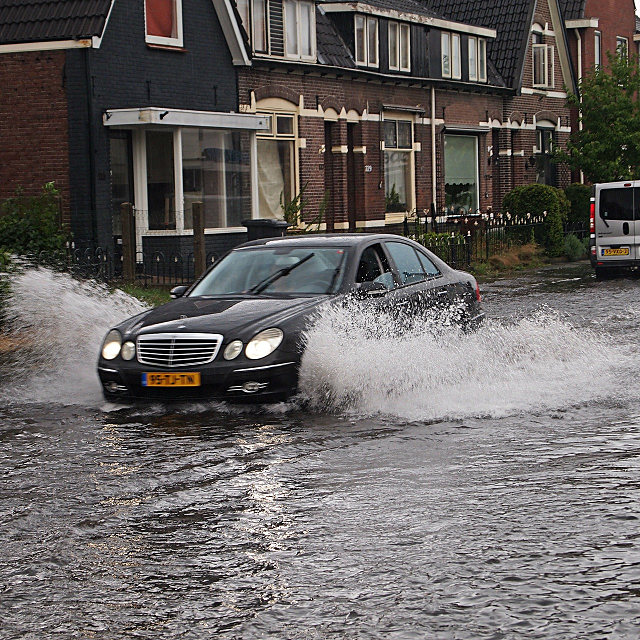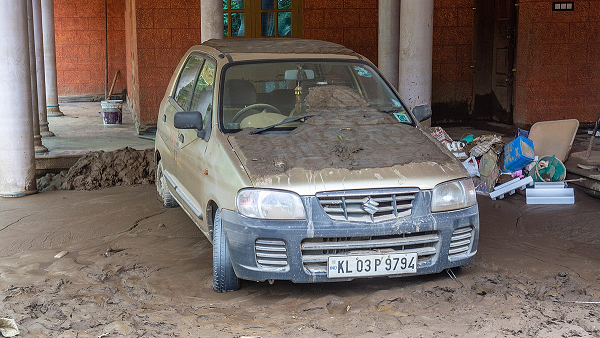Tips and Tricks for Washing a Flooded Car
By Andrea Nicole
Posted on Dec 02, 2020

Source: Needpix.com
Storm after a storm hit our country in the past few weeks, and various places were submerged into floodwater. It took several hours to days before the water completely subsided. Aside from that, it also left piles and piles of debris and a huge problem for many car owners. One of those problems is how to wash a flooded car properly.
Washing your flooded car might be challenging since you have to deal with mud, debris, and possible engine problems. This article will help you out on how to properly wash your car!
Steps in washing a flooded car

Source: Wikimedia Commons
This section will provide you with a step-by-step process on how to wash your car correctly. You will also find helpful notes and tips so you can make your vehicle go squeaky clean again!
Step 1: Find a shaded place to wash your car
Why do you think you should avoid washing your car directly under the light of the sun? Well, if you don't know the reason yet, water reacts like a magnifying glass when under the sun. If you leave it there until it finally dries up, then it can damage the paint of your car over time. You might not notice it at first, but if you keep the habit of washing your car under the sun, then you might need a paint job in the future.
Aside from that, the water droplets can also turn into water spots when it dries up under the sun's blazing heat. It can result in lasting damage to the paint, and it might even lead to metal corrosion or more commonly known as rusting- this is why you should first find a shaded place to wash your car before showering it with water!
However, if you don't have a shaded place and badly need to wash your car, it is recommended that you keep the exterior of your car cool by spraying water from time to time, but keep in mind to wipe it with a clean cloth afterward. Besides that, you may also choose to wash your car early in the morning or late afternoon to avoid direct sunlight.
Step 2: Prepare the materials that you need
After you have found a shaded place where you can wash your car, it's time to get all the materials you need. Here is a list of the things that you must prepare before proceeding with washing your car:
- Bucket of water or hose
- Car soap
- Squeegee
- Duster
- Chamois and microfiber towel
- Tire black
- Degreaser
- Interior protectant
- Vacuum cleaner
You might get overwhelmed by many products to wash your car, but believe it or not, each of these items has a specific purpose. Besides that, having these items will also make car cleaning a lot easier!
Step 3: Wash the tires first
Your tires will indeed be covered in mud after the flood. If you want to clean your flooded car's tires easily, you should use a special wheel cleaning solution. However, it is essential to note that this kind of solution usually contains the harshest chemicals; this is also why it is highly recommended to start with the wheels so that it will be easily washed off as you go along.
Step 4: Wash from top to bottom
Remove any debris and mud caused by the flood by running down water from the top to the bottom of your car. You may also try to scrub off any hardened dirt with your fingers; be keen about not using your fingernail as it may leave a scratch on the paint. Once you are done with that, you can now apply car soap using chamois and wash it off in directions from top to bottom using a hose or dipper. Make sure that all debris and mud are washed off in the process.
Step 5: Wipe it dry
You can wipe off excess water using a chamois towel; this towel is super absorbent and can save you your precious time in drying your car. Please note that it's crucial to dry from the top of the vehicle and work your way to the bottom to avoid repeating the other sections.
You can wipe the windows of your car dry using a squeezer or a chamois towel. Just make sure that there are no more debris or small dirt particles, as they can scratch the glass.
Step 6: Polish your car
After drying your car, do not forget to polish it to make it look good as new. Remember to apply car polish in a circular motion until it dried up.
Step 7: Clean the interior
After cleaning the outsides, you must also clean the insides. You may use a vacuum cleaner to remove all the dirt particles that are lurking inside your car.
Cleaning a flooded car might be tedious, but it is nice to see your vehicle free from mud and debris! So, get that bucket and start washing your car properly by following these simple steps!

